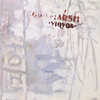Bob Marsh, "Viovox"
 The Public Eyesore label has been extremely prolific in recent years, bringing out some of the most abstract and out of left field works from artists that are either extremely obscure or simply getting their start in the world of sound art. Bob Marsh's disc therefore definitely fits in the raison d'etre of the label, as it is almost impossible to classify, yet has the sense of experimentation and even some sonic similarities to some of the most abstract of the early industrialists.
The Public Eyesore label has been extremely prolific in recent years, bringing out some of the most abstract and out of left field works from artists that are either extremely obscure or simply getting their start in the world of sound art. Bob Marsh's disc therefore definitely fits in the raison d'etre of the label, as it is almost impossible to classify, yet has the sense of experimentation and even some sonic similarities to some of the most abstract of the early industrialists.
The similarities come with one of Marsh's major instruments, the violin. Both Throbbing Gristle and Cabaret Voltaire employed the old instrument in similarly esoteric ways, and here it gets run through enough delay and echo to resemble those early artists. However, the level of abstraction here is even further out. The opening "Over Time You'll See" captures this clearly, the effected and treated violin creating dissonant waves of sound as small fragments of echoed, indecipherable vocals. "A Walk In The Park" plucks the strings of the violin through the wall of echo and creates a wall of sound that is much larger than the sum of its parts.
The vocals on here are probably the most "out there" element: the seemingly random nature of "Bring Out The Dead" is combined with an electronic backing that sounds like every Rick Wakeman keyboard solo layered together. The short "Keep It Sample" is based completely around that: a track based largely around a processed and manipulated voice sample is the entire basis of the track.
In that regard, the disc has a certain dada poetry aura about it. "Voice of America" (possibly a reference to the Cabaret Voltaire album of the same name, but doubtfully) has a repeated vocal motif that is obviously there, but cannot be clearly discerned as to what the voice is actually saying, or if it is anything at all. The sleeve references that nature of the disc as words that "are not clear are unclear," so obviously Marsh intentionally made everything this way.
Granted, this is an extremely difficult listen, as it eschews most things that can be used as reference points in music. As a piece of sound art, it is a captivating document using limited sound sources to compose a unique work. As entertainment, well, I found it an interesting listen, but it is not the type of work I could really see myself returning to many times in the future.
samples:



